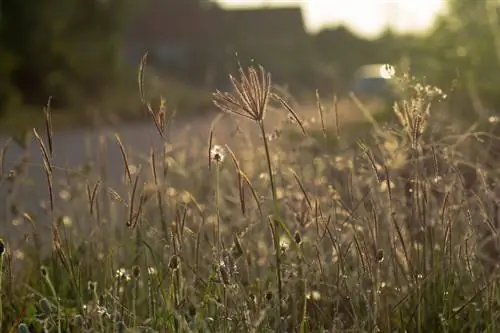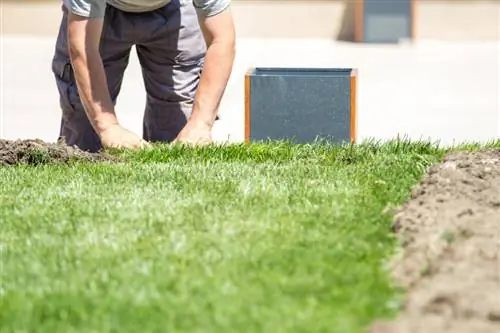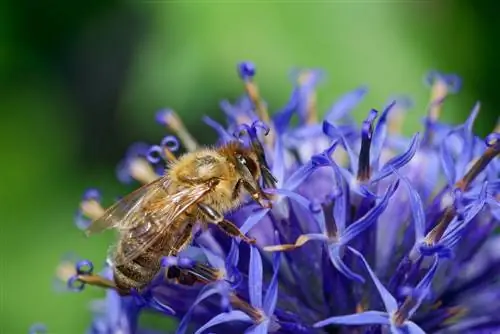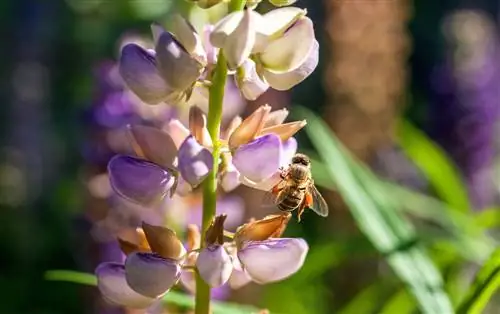- Author admin [email protected].
- Public 2023-12-16 16:46.
- Last modified 2025-01-23 11:20.
The poor meadow, also known as dry meadow, is now de facto threatened with extinction. Since this type of meadow can hardly be used for agriculture, it is converted into more economical forms of use, especially in areas used intensively for agriculture. Nevertheless, creating a poor meadow can be worthwhile, as the numerous flowering herbs and flowers serve as pasture for butterflies and bees.
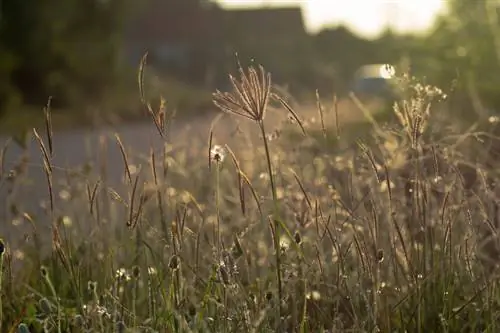
How can I create a poor meadow?
To create a poor meadow, you should first thin the soil, stop fertilizing, cut the lawn/meadow short, remove moss, cut out stubborn growths, scarify the area, dig up, apply a soil-sand mixture, smooth the area and spread seed mixture.
Poor meadows are very rich in species
Poor meadows are among the most species-rich types of meadows, as the lime-rich and nutrient-poor soil ensures that weakly competitive plants in particular thrive - in contrast to a rich meadow, for example, where only fast-growing grasses and flowers have a chance due to the high nitrogen content. As a result, poor meadows help save rare plant species from extinction. In addition, poor meadows with their rich flowers also serve as a food source for rare butterflies.
Typical plants for poor meadows
Poor meadows typically have a manageable number of flowers and herbs, which it is impossible to list all of them here. Some typical representatives should still be mentioned:
- Quickgrass (Briza media)
- Carnation (Armeria maritima)
- Small Agrimony (Agrimonia eupatoria)
- Primrose (Primula veris)
- Bulb buttercup (Ranunculus bulbosus)
- Pechnelke (Silene viscaria)
- Upright brome ((Bromus erectus)
- Small meadow button (Sanguisorba minor)
Different types of poor meadows
Which flowers and herbs can be found in a poor meadow is primarily determined by the type of poor or dry meadow. In Germany (and in Central Europe in general), sandy meadows and limestone meadows are particularly widespread.
Create poor meadow
In order to create a poor meadow, you first have to thin out the existing soil. If, for example, you want to turn a lawn or a rich meadow into a dry meadow, you first have to prevent the fast-growing grasses from growing, because they displace slower-growing flowers and herbs. Since grasses need a lot of nitrogen to grow, the first step you should take is to stop all fertilization. Then proceed as follows:
- Cut the lawn/meadow as short as possible.
- Remove moss and dead grass using a rake.
- Pull out dandelions and other stubborn plants including their roots.
- Scarify the area.
- Dig them up if necessary.
- Improve too rich soil with a thick layer of soil-sand mixture.
- Crumble up larger soil crumbs and rake the area smooth.
- Throw out the selected seed mixture for poor meadows over a large area.
- Mix the seeds with sand, then the distribution will be more even.
- Rake the seeds lightly and press them down.
- Keep the area slightly moist, especially in the first few weeks.
Poor meadows should under no circumstances be fertilized, otherwise fast-growing grasses will regain the upper hand and the diversity of species will decline.
Tips & Tricks
If possible, only mow the poor meadow once a year in September, when the late-flowering plants have also disappeared.

